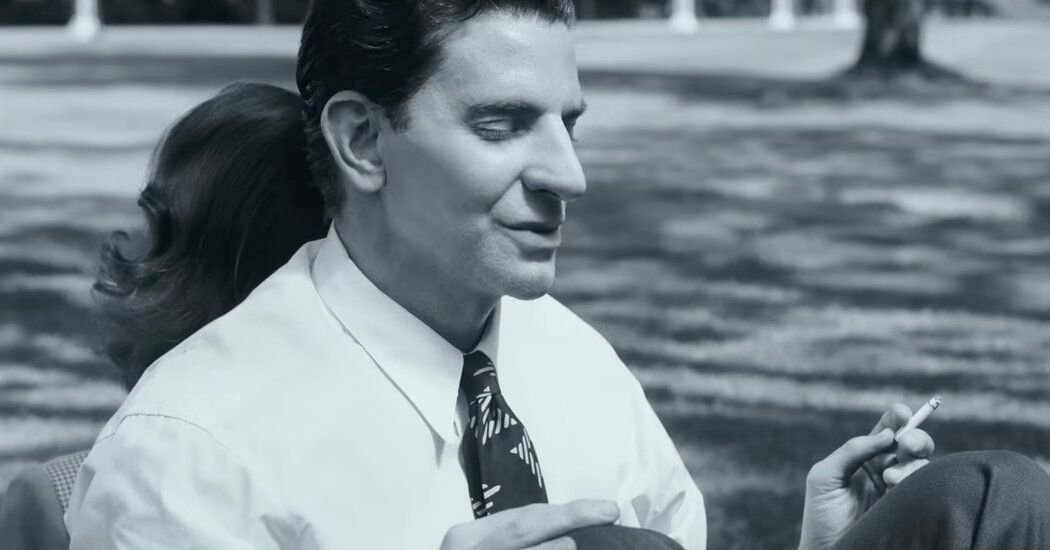
In August, the first trailer for “Maestro,” a biopic of Leonard Bernstein, the composer of “West Side Story” and so much more, set off a backlash almost immediately: Bradley Cooper was wearing a prosthetic nose for the title role.
Critics on social media accused the star, who is also the director, of playing into an antisemitic trope with the Size XL prosthesis — and asked whether someone who is Jewish would have been more sensitive about makeup choices
Cooper and Netflix, where “Maestro” will begin streaming on Wednesday, declined to comment. In a statement at the time, Bernstein’s three children, who had been working with Cooper on the film, came to the actor’s defense, noting in a series of posts on X, “It happens to be true that Leonard Bernstein had a nice, big nose.” (The family declined to offer additional comment.)
It’s hardly the first time an oversize septum has made an onscreen appearance or courted controversy. Here are 12 of the most memorable fake noses in cinematic history, sorted by size from dainty 🥸 to elephantine 🥸🥸🥸🥸🥸.
Orson Welles, ‘Touch of Evil’ 🥸
Like Edmond Rostand’s poet and swordsman, Cyrano de Bergerac, Orson Welles was obsessed with his nose. (He believed his was too small; it was, of course, completely normal.) But instead of channeling his fixation into a healthy pursuit like, say, helping another man win the affections of his own beloved, he sported dozens of fakes over his career. One of the largest was the pugnacious pair of nostrils he wore as the corrupt police captain Hank Quinlan in the 1958 murder mystery “Touch of Evil.”
Nicole Kidman, ‘The Hours’ 🥸
Nicole Kidman may have delivered a stirring performance as Virginia Woolf in “The Hours” (2002), but Denzel Washington joked that it was the prosthetic beak she wore that won her the best actress Academy Award. (“The Oscar goes to, by a nose, Nicole Kidman,” he joked when announcing her win.) Kidman wore a fresh one each day on set, though she told The Associated Press that she hung on to a silver one she was given when shooting wrapped.
Ralph Fiennes, ‘Harry Potter and the Deathly Hallows: Part 2’ 🥸
Is that thing even functional? Probably not; snakes don’t have noses — just nostrils — and smell with their forked tongues. We wouldn’t be surprised if J.K. Rowling’s reptilian baddie in this 2011 franchise finale had one of those, too. But at least we may finally have an answer as to what Voldemort’s unnaturally long fingers are good for: Nose-picking.
Meryl Streep, ‘The Iron Lady’ 🥸
Like Kidman, Meryl Streep rode the prosthetic nose she donned to play the British prime minister Margaret Thatcher in Phyllida Lloyd’s 2011 biopic to an Oscar win (her third). But this time, the transformation’s genius was in its subtlety — when the first photos of Streep on set were released, the press made nary a peep about the nose.
Laurence Olivier, ‘Richard III’ 🥸🥸
Unlike Welles, Laurence Olivier didn’t habitually don a fake nose for his roles because of a perceived insecurity about the size of his own; rather, it was just one of the suite of theatrical accessories, including masks and wigs, that he, and many other actors, used to transform into various characters. In “Richard III” (1955), which Olivier also directed, his character’s nose is, as one blogger put it, “majestically prominent.”
Rudolph, ‘Rudolph the Red-Nosed Reindeer’ 🥸🥸
With a workshop of Santa’s elves nearby in this 1964 special, the best Rudolph’s dad, Donner, could do to help his son fit in at school was make a fake nose from mud? He won’t be winning any father-of-the-year awards for that effort.
Margaret Hamilton, ‘The Wizard of Oz’ 🥸🥸🥸
Margaret Hamilton came by some of the goods to play the Wicked Witch of the West naturally: She was known for her overlarge nose, which her own father had encouraged her to have surgically altered. But she got the last laugh when she landed the role of the now-iconic villain in “The Wizard of Oz” (1939) — for which her nose was made even longer (and greener).
Matt Damon, ‘Ocean’s Thirteen’ 🥸🥸🥸
Sure, there are performers with bigger noses on this list, but Matt Damon might be the only one who planned a con around his. In this 2007 sequel, his character, Linus, dons the prosthesis — which Damon nicknamed “The Brody” in a nod to the actor Adrien Brody’s well, you know — in a bid to disguise himself and gain access to a case full of diamonds.
Steve Carell, ‘Foxcatcher’ 🥸🥸🥸
Steve Carell’s souped-up schnozz in this 2014 true-crime tale may have left some people scratching their heads — the real-life version of his character, John du Pont, the millionaire wrestling enthusiast-turned-murderer, wasn’t well known, so the attention to detail seemed excessive. But the nose did serve another purpose: It made audiences forget they were staring at Carell, who was known mainly for comedies at the time.
Alec Guinness, ‘Oliver Twist’ 🥸🥸🥸🥸
Charles Dickens wrote Fagin in “Oliver Twist” as a thoroughly antisemitic villain, and in the 1948 film adaptation, Alec Guinness, the non-Jewish actor who played the character, spoke in a droning lisp and appeared with hooded eyes and an enormous prosthetic hook nose. The nose was deemed “incredibly insensitive,” as The Jewish Chronicle wrote, and it provoked significant anger from Holocaust survivors.
Billy Crystal, ‘The Princess Bride’ 🥸🥸🥸🥸
Billy Crystal was already so funny in “The Princess Bride” (1987) that the director, Rob Reiner, claimed that he had to leave the set during Crystal’s scenes as Miracle Max because he was unable to contain his laughter. Adding a bulbous tomato of a nose took Crystal’s physical comedy over the top. (Mandy Patinkin, who played Inigo Montoya, actually bruised a rib trying to stifle his own chuckles.)
Steve Martin, ‘Roxanne’ 🥸🥸🥸🥸🥸
You could land a bird on that thing (which the director, Fred Schepisi, did). Steve Martin’s five-inch appendage for the 1987 film took 90 minutes to apply every day and two minutes to remove. “God how I hated that thing,” he told The Washington Post.













